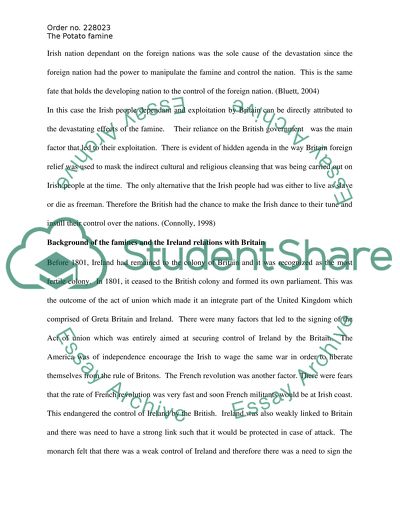Cite this document
(The Great Irish Famine Research Paper Example | Topics and Well Written Essays - 2000 words, n.d.)
The Great Irish Famine Research Paper Example | Topics and Well Written Essays - 2000 words. https://studentshare.org/history/1546658-discuss-the-argument-that-the-irish-potato-famine-of-the-mid-19th-centurry-was-an-act-of-genocide-carried-out-by-the-british-empire-as-a-means-of-religous-and-c
The Great Irish Famine Research Paper Example | Topics and Well Written Essays - 2000 words. https://studentshare.org/history/1546658-discuss-the-argument-that-the-irish-potato-famine-of-the-mid-19th-centurry-was-an-act-of-genocide-carried-out-by-the-british-empire-as-a-means-of-religous-and-c
(The Great Irish Famine Research Paper Example | Topics and Well Written Essays - 2000 Words)
The Great Irish Famine Research Paper Example | Topics and Well Written Essays - 2000 Words. https://studentshare.org/history/1546658-discuss-the-argument-that-the-irish-potato-famine-of-the-mid-19th-centurry-was-an-act-of-genocide-carried-out-by-the-british-empire-as-a-means-of-religous-and-c.
The Great Irish Famine Research Paper Example | Topics and Well Written Essays - 2000 Words. https://studentshare.org/history/1546658-discuss-the-argument-that-the-irish-potato-famine-of-the-mid-19th-centurry-was-an-act-of-genocide-carried-out-by-the-british-empire-as-a-means-of-religous-and-c.
“The Great Irish Famine Research Paper Example | Topics and Well Written Essays - 2000 Words”. https://studentshare.org/history/1546658-discuss-the-argument-that-the-irish-potato-famine-of-the-mid-19th-centurry-was-an-act-of-genocide-carried-out-by-the-british-empire-as-a-means-of-religous-and-c.


